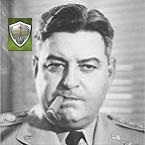ColinWright
Posts: 2604
Joined: 10/13/2005
Status: offline

|
quote:
ORIGINAL: Curtis Lemay
quote:
ORIGINAL: ColinWright
How do you figure? Unless a supply unit was brought in and disbanded, unsupplied units would be unsupplied just as they are now.
Under the current rules units are only rated "unsupplied" if they lack a supply communications path back to a supply point. That would have to be revised in some fashion to require players to deliver some supply to non-isolated units. Furthermore, because of this, unsupplied units are also, by definition, "isolated". So the consequences of being unsupplied also include consequences associated with being isolated (stragglers, etc. sent to dead pile instead of the pools, for example). We'd actually need separate definitions of "unsupplied" and "isolated" - with separate consequences.
quote:
How does this differ from the current system?
Currently a non-isolated unit doesn't consume supply just sitting there. An isolated one does. That's fine for an abstract system. But now, this needs to apply to all units, regardless of supply state, since we're going to be accounting for the actual delivery and associated lift requirements.
You're not making sense to me. The only explanation I can see for your remarks is that you are referring to some system you have in mind that differs from what I have proposed.
How have I started 'accounting for the actual delivery and associated lift requirements'? I don't think I've set up an mechanism for that at all.quote:
quote:
quote:
This almost necessitates inclusion of component supply to the algorithm.
And I don't like the distribution-radius thing, since that introduces all sorts of complications (interdiction issues, path issues, MP cost issues, etc.).
I see the distribution radius thing as necessary (or at least very desirable) for two reasons.
On the one hand, you don't want supply units that are Father Christmas and give everyone on the map a supply bonus. That's going to perpetuate all kinds of problems and create some new ones.
On the other hand, you don't want silliness with units forming stacks with the supply unit to garner the supplies -- nor do you want myriads of little supply units all over the place.
An adjustable radius lets designers get whatever effect they want. Now, if you want to incorporate terrain, interdiction effects, etc, that could be an improvement -- but it might also make it unnecessarily complex for players to calculate the effects and use the units intelligently. After all, neither you nor I want to see properly manipulating one's supply units as the key to victory. For my part, I just want something that allows for a supply system that is essentially volume-based for those designers that feel the need.
I understand your concerns, but I'm also sure it's going to introduce a lot of complexity into the coding task because it's an amalgamation of both discrete supply and abstract supply at the same time. And it will cause a realism hit.
Just take the interdiction issue. Under the current abstract method, supply interdiction is abstracted during the calculation phase based on the enemy interdiction level. That level is based on the combination of the amounts of air assets assigned to interdiction versus the enemy map area they have to cover. Under a pure discrete supply system, their would be no such abstraction. Rather, the supply units themselves would be subject to unit movement interdiction. But with an amalgamation, the supply units themselves get interdicted traveling up to the radius range, then the rest of the way has to be abstracted somehow (based on what?). And that last bit is the part where interdiction is most likely (closest to the front).
Well, this presupposes that the current interdiction model is a particularly faithful or accurate representation of reality. I don't think it is, so it doesn't disturb me that we may be affecting how it operates.quote:
Then there is the path issue. I would assume you want at least some path code. Otherwise it would broadcast supply to isolated units.
I'd tend to see this as not necessarily essential. People who really didn't want isolated units benefiting when a supply unit disbanded could simply set the radius of supply units to zero or one -- or refrain from using supply units at all. After all, units that are in isolated positions often do manage to obtain sporadic supply. It's not like it would necessarily be all that unrealistic if the disbanding of a supply unit led to supplies reaching that stack isolated two hexes away -- nor would it necessarily solve those units' problem. Indeed, the owning player might not want to piss away his supply that way -- in which case he would set them to 'minimize losses' while he disbanded the supply unit.
However, if you can code a path algorithm for the distribution of supply points from the supply unit, I won't object to the feature. I just don't see it as either vital or overwhelmingly important.quote:
quote:
Beyond that, there is a timing issue. The supply unit gets within range of the front with its last MP, disbands, and the front gets supplied like magic. And that radius could even be multiple turns of movement away from the front. In that case, there actually wouldn't be a guarantee that the supply would ever have gotten there, due to subsequent enemy action that might have isolated that section of the front.
Yeah. However, the supply unit is to some extent an abstraction in the first place: see it as representing the locus of supplies that have actually been brought up somewhat earlier and are now actually getting to the units in the area in question. Alternatively, one could always put in code preventing the unit from disbanding after it has expended movement points.quote:
I think a better solution is to focus coding on a "Quartermaster Assistant" that would relieve the player of some of the burden (necessary for the PO regardless). Or maybe there's an even better way we haven't thought of yet.
quote:
quote:
I had envisioned the supply being "lifted" by the units, rather than being part of their TO&E. That's a simpler way to do it. But perhaps there could be a combat effect such that loss of Supply Unit transport equipment also destroyed an equivalent fraction of their supply "points". And I wanted the lift units to be ad hoc units created on the fly, rather than official parts of the OOB. Your way may be better - simpler at least. But scenarios already at the OOB limits will have a problem.
They would only have problems if they were modified to take advantage of the additional mechanism. It's like the introduction of guerilla units. You don't have to put them in your scenarioquote:
You don't cover the return trip for the supply units, though. I assume you mean for them to just reconstitute back at the supply point, skipping that return trip. There's also the issue that units in an "unsupplied" condition can't disband. So an isolated pocket with a big horde of supply units wouldn't be able to use them. A refinement might be to design the supply units to "deposit" the supply in the hex without disbanding, then deny them reconstitution. Then they'd have to make a round trip and wouldn't have to be in supply to distribute their load.
It seems to me that the program could just be told to allow supply units to disband regardless of their supply status -- or to regard them as always in supply. And if this can't be done -- oh well. The supply units would still improve matters for most situations in most scenarios.
In general, though, I will grant that there are all kinds of possible refinements and improvements. However, I wanted to start with something that was as simple as possible and that yet would yield a clear and significant improvement over the current situation.
The thing is, there's not going to be a kaleidoscope of discrete supply systems developed. We have to settle on the best one. Note that I'm not discounting that some of your ideas may be better than mine. We're just discussing it.
An advantage of "ad hoc" supply units it that it would give the players some needed flexibility. And the return trip requirement is a realism issue.
As a player, I'd rather not have to jerk around with moving 'exhausted' supply units that -- like MP's, rail repair units, etc -- would really be something of an abstraction in the first place. In the search for 'realism' it needs to be borne in mind that we may not be simulating something that is particularly 'real' in the first place. After all, supply units generally don't move as concentrated hordes located in one particular hex. I'm just using units to move supply because they are easily seen and controlled by the player.
Naturally, players might do all sorts of things, but the way I tend to visualize using such a system would be to have a minimum of traditional supply -- like 5%. Then a modest number of supply units -- like maybe one for every fifty units appearing each turn. These move up to the front and disband. The focus can either be on getting everyone ready to withstand the impending onslaught, by going first to one sector and then another, to unleash Bagration by the same means, or to quickly pump up one sector and deliver something like Citadel.
Note how well this could work. Like, when the Russians go over to their own attacks in response to Citadel, one of the reasons I will be motivated to abandon my own attack is that I will need to start diverting my own supply units to refuel those units who are resisting the Russian onslaught.
_____________________________
I am not Charlie Hebdo
|
 Printable Version
Printable Version







 New Messages
New Messages No New Messages
No New Messages Hot Topic w/ New Messages
Hot Topic w/ New Messages Hot Topic w/o New Messages
Hot Topic w/o New Messages Locked w/ New Messages
Locked w/ New Messages Locked w/o New Messages
Locked w/o New Messages Post New Thread
Post New Thread